Application of white grape pomace in the brewing technology and its impact on the concentration of esters and alcohols, physicochemical parameteres and antioxidative properties of the beer
Alan Gasiński, Joanna Kawa-Rygielska, Dawid Mikulski, Grzegorz Kłosowski, Adam Głowacki
Food Chemistry
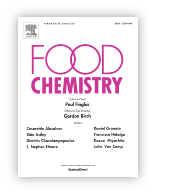 Main by-product of white wine production is white grape pomace (WGP). It has attracted attention of food scientists, because it possesses high concentration of nutrients and bioactive substances. In this study, WGP was added to the beer after primary fermentation in two different concentrations (10% w/w and 20% w/w) and two different pretreatments (pasteurised and unpasteurised) to determine, whether the most abundant waste from white wine industry could be used to modify the volatilome and phenolic content of the beer. The addition of white grape pomace increased the concentration of phenolic compounds in all of the tested beers (from 321.584 mg gallic acid equivalent (GAE)/dm3 to 501.459 mg GAE/dm3). Antioxidant activity of the beers with addition of WGP (tested with the ABTS+•, DPPH• and FRAP assays) also increased. The composition of volatiles in beers changed as WGP was added. The most significant difference was in the concentration of acetaldehyde - beers with WGP added had 4–7 times lower acetaldehyde content (17.425–31.425 mg/dm3) than the control sample (134.050 mg/dm3).
Main by-product of white wine production is white grape pomace (WGP). It has attracted attention of food scientists, because it possesses high concentration of nutrients and bioactive substances. In this study, WGP was added to the beer after primary fermentation in two different concentrations (10% w/w and 20% w/w) and two different pretreatments (pasteurised and unpasteurised) to determine, whether the most abundant waste from white wine industry could be used to modify the volatilome and phenolic content of the beer. The addition of white grape pomace increased the concentration of phenolic compounds in all of the tested beers (from 321.584 mg gallic acid equivalent (GAE)/dm3 to 501.459 mg GAE/dm3). Antioxidant activity of the beers with addition of WGP (tested with the ABTS+•, DPPH• and FRAP assays) also increased. The composition of volatiles in beers changed as WGP was added. The most significant difference was in the concentration of acetaldehyde - beers with WGP added had 4–7 times lower acetaldehyde content (17.425–31.425 mg/dm3) than the control sample (134.050 mg/dm3).
DOI:10.1016/j.foodchem.2021.130646
Influence of Torrefaction Temperature and Climatic Chamber Operation Time on Hydrophobic Properties of Agri-Food Biomass Investigated Using the EMC Method
Arkadiusz Dyjakon, Tomasz Noszczyk, Łukasz Sobol, Dominika Misiakiewicz
Energies
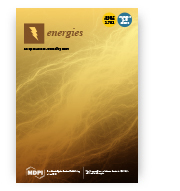 Due to the tendency for excessive moisture adsorption by raw, unprocessed biomass, various methods of biomass valorization are in use, allowing for the improvement of physical–chemical biomass properties, including hydrophobicity. One of the methods is torrefaction, which changes the hydrophilic properties of the biomass to hydrophobic. Therefore, in this study, the influence of the torrefaction temperature and the exposure time to moisture adsorption conditions on the hydrophobic properties of waste biomass from the agri-food industry (lemon peel, mandarin peel, grapefruit peel, and butternut-squash peel) were analyzed. The torrefaction was carried out at the following temperatures: 200, 220, 240, 260, 280, 300, and 320 °C. The hydrophobic properties were determined by using the EMC (Equilibrium Moisture Content) method, conducting an experiment in the climatic chamber at atmospheric pressure, a temperature of 25 °C, and relative humidity of 80%. The total residence time of the material in the climate chamber was 24 h. It was shown that the torrefaction process significantly improves the hydrophobic properties of waste biomass. Concerning dried raw (unprocessed) material, the EMC (24 h) coefficient was 0.202 ± 0.004 for lemon peels, 0.223 ± 0.001 for grapefruit peels, 0.237 ± 0.004 for mandarin peels, and 0.232 ± 0.004 for butternut squash, respectively. After the torrefaction process, the EMC value decreased by 24.14–56.96% in relation to the dried raw material, depending on the type of organic waste. However, no correlation between the improvement of hydrophobic properties and increasing the torrefaction temperature was observed. The lowest values of the EMC coefficient were determined for the temperatures of 260 °C (for lemon peel, EMC = 0.108 ± 0.001; for mandarin peel, EMC = 0.102 ± 0.001), 240 °C (for butternut-squash peel, EMC = 0.176 ± 0.002), and 220 °C (for grapefruit peel, EMC = 0.114 ± 0.008). The experiment also showed a significant logarithmic trend in the dependence of the EMC coefficient on the operating time of the climatic chamber. It suggests that there is a limit of water adsorption by the material and that a further increase of the exposure time does not change this balance.
Due to the tendency for excessive moisture adsorption by raw, unprocessed biomass, various methods of biomass valorization are in use, allowing for the improvement of physical–chemical biomass properties, including hydrophobicity. One of the methods is torrefaction, which changes the hydrophilic properties of the biomass to hydrophobic. Therefore, in this study, the influence of the torrefaction temperature and the exposure time to moisture adsorption conditions on the hydrophobic properties of waste biomass from the agri-food industry (lemon peel, mandarin peel, grapefruit peel, and butternut-squash peel) were analyzed. The torrefaction was carried out at the following temperatures: 200, 220, 240, 260, 280, 300, and 320 °C. The hydrophobic properties were determined by using the EMC (Equilibrium Moisture Content) method, conducting an experiment in the climatic chamber at atmospheric pressure, a temperature of 25 °C, and relative humidity of 80%. The total residence time of the material in the climate chamber was 24 h. It was shown that the torrefaction process significantly improves the hydrophobic properties of waste biomass. Concerning dried raw (unprocessed) material, the EMC (24 h) coefficient was 0.202 ± 0.004 for lemon peels, 0.223 ± 0.001 for grapefruit peels, 0.237 ± 0.004 for mandarin peels, and 0.232 ± 0.004 for butternut squash, respectively. After the torrefaction process, the EMC value decreased by 24.14–56.96% in relation to the dried raw material, depending on the type of organic waste. However, no correlation between the improvement of hydrophobic properties and increasing the torrefaction temperature was observed. The lowest values of the EMC coefficient were determined for the temperatures of 260 °C (for lemon peel, EMC = 0.108 ± 0.001; for mandarin peel, EMC = 0.102 ± 0.001), 240 °C (for butternut-squash peel, EMC = 0.176 ± 0.002), and 220 °C (for grapefruit peel, EMC = 0.114 ± 0.008). The experiment also showed a significant logarithmic trend in the dependence of the EMC coefficient on the operating time of the climatic chamber. It suggests that there is a limit of water adsorption by the material and that a further increase of the exposure time does not change this balance.
DOI:10.3390/en14175299
Novel Nanohydroxyapatite (nHAp)-Based Scaffold Doped with Iron Oxide Nanoparticles (IO), Functionalized with Small Non-Coding RNA (miR-21/124) Modulates Expression of Runt-Related Transcriptional Factor 2 and Osteopontin, Promoting Regeneration of Osteoporotic Bone in Bilateral Cranial Defects in a Senescence-Accelerated Mouse Model (SAM/P6). PART 2
Krzysztof Marycz, Agnieszka Śmieszek, Katarzyna Kornicka-Garbowska, Ariadna Pielok, Maciej Janeczek, Anna Lipińska, Anna Nikodem, Jarosław Filipiak, Paulina Sobierajska, Jean-Marie Nedelec, Rafał J. Wiglusz
International Journal of Nanomedicine
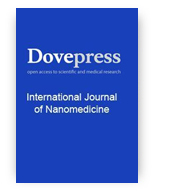 Purpose: Healing of osteoporotic defects is challenging and requires innovative approaches to elicit molecular mechanisms promoting osteoblasts-osteoclasts coupling and bone homeostasis. Methods: Cytocompatibility and biocompatibility of previously characterised nanocomposites, i.e Ca5(PO4)3OH/Fe3O4 (later called nHAp/IO) functionalised with microRNAs (nHAp/IO@miR-21/124) was tested. In vitro studies were performed using a direct coculture system of MC3T3-E1 pre-osteoblast and 4B12 pre-osteoclasts. The analysis included determination of nanocomposite influence on cultures morphology (confocal imaging), viability and metabolic activity (Alamar Blue assay). Pro-osteogenic signals were identified at mRNA, miRNA and protein level with RT-qPCR, Western blotting and immunocytochemistry. Biocompatibility of biomaterials was tested using bilateral cranial defect performed on a senescence-accelerated mouse model, ie SAM/P6 and Balb/c. The effect of biomaterial on the process of bone healing was monitored using microcomputed tomography. Results: The nanocomposites promoted survival and metabolism of bone cells, as well as enhanced functional differentiation of pre-osteoblasts MC3T3-E1 in co-cultures with pre-osteoclasts. Differentiation of MC3T3-E1 driven by nHAp/IO@miR-21/124 nanocomposite was manifested by improved extracellular matrix differentiation and up-regulation of pro-osteogenic transcripts, ie late osteogenesis markers. The nanocomposite triggered bone healing in a cranial defect model in SAM/P6 mice and was replaced by functional bone in Balb/c mice. Conclusion: This study demonstrates that the novel nanocomposite nHAp/IO can serve as a platform for therapeutic miRNA delivery. Obtained nanocomposite elicit pro-osteogenic signals, decreasing osteoclasts differentiation, simultaneously improving osteoblasts metabolism and their transition toward pre-osteocytes and bone mineralisation. The proposed scaffold can be an effective interface for in situ regeneration of osteoporotic bone, especially in elderly patients.
Purpose: Healing of osteoporotic defects is challenging and requires innovative approaches to elicit molecular mechanisms promoting osteoblasts-osteoclasts coupling and bone homeostasis. Methods: Cytocompatibility and biocompatibility of previously characterised nanocomposites, i.e Ca5(PO4)3OH/Fe3O4 (later called nHAp/IO) functionalised with microRNAs (nHAp/IO@miR-21/124) was tested. In vitro studies were performed using a direct coculture system of MC3T3-E1 pre-osteoblast and 4B12 pre-osteoclasts. The analysis included determination of nanocomposite influence on cultures morphology (confocal imaging), viability and metabolic activity (Alamar Blue assay). Pro-osteogenic signals were identified at mRNA, miRNA and protein level with RT-qPCR, Western blotting and immunocytochemistry. Biocompatibility of biomaterials was tested using bilateral cranial defect performed on a senescence-accelerated mouse model, ie SAM/P6 and Balb/c. The effect of biomaterial on the process of bone healing was monitored using microcomputed tomography. Results: The nanocomposites promoted survival and metabolism of bone cells, as well as enhanced functional differentiation of pre-osteoblasts MC3T3-E1 in co-cultures with pre-osteoclasts. Differentiation of MC3T3-E1 driven by nHAp/IO@miR-21/124 nanocomposite was manifested by improved extracellular matrix differentiation and up-regulation of pro-osteogenic transcripts, ie late osteogenesis markers. The nanocomposite triggered bone healing in a cranial defect model in SAM/P6 mice and was replaced by functional bone in Balb/c mice. Conclusion: This study demonstrates that the novel nanocomposite nHAp/IO can serve as a platform for therapeutic miRNA delivery. Obtained nanocomposite elicit pro-osteogenic signals, decreasing osteoclasts differentiation, simultaneously improving osteoblasts metabolism and their transition toward pre-osteocytes and bone mineralisation. The proposed scaffold can be an effective interface for in situ regeneration of osteoporotic bone, especially in elderly patients.
DOI:10.2147/IJN.S316240
Opportunities and Challenges of High-Pressure Fast Pyrolysis of Biomass: A Review
Waheed Rasaq, Mateusz Golonka, Miklas Scholz, Andrzej Białowiec
Energies
 Most pyrolysis reactors require small sizes of biomass particles to achieve high-quality products. Moreover, understanding the usefulness of high-pressure systems in pyrolysis is important, given the operational challenges they exhibit specific to various biomass materials. To actualize these aspects, the authors first checked previous reviews involving pyrolysis on different biomass and different conditions/situations with their respective objectives and subsections. From these already existing reviews, the team found that there has not been much emphasis on high-pressure fast pyrolysis and its potential in biomass conversion, showing that it is a novel direction in the pyrolysis technology development. Therefore, this review aims to shed more light on high-pressure fast pyrolysis, drawing from (a) classification of pyrolysis; (b) reactors used in fast pyrolysis; (c) heat transfer in pyrolysis feedstock; (d) fast pyrolysis parameters; (e) properties/yields of fast pyrolysis products; (f) high pressure on pyrolysis process; (g) catalyst types and their application; and (h) problems to overcome in the pyrolysis process. This review increases the understanding regarding high-pressure fast pyrolysis. An attempt has been made to demonstrate how high-pressure fast pyrolysis can bring about high-quality biomass conversion into new products. It has been shown that fluidized bed (bubbling and circulating) reactors are most suitable and profitable in terms of product yield. The high-pressure, especially combined with the fast-heating rate, may be more efficient and beneficial than working under ambient pressure. However, the challenges of pyrolysis on a technical scale appear to be associated with obtaining high product quality and yield. The direction of future work should focus on the design of high-pressure process reactors and material types that might have greater biomass promise, as well understanding the impact of pyrolysis technology on the various output products, especially those with lower energy demands. We propose that the increase of process pressure and biomass particle size decrease should be considered as variables for optimization.
Most pyrolysis reactors require small sizes of biomass particles to achieve high-quality products. Moreover, understanding the usefulness of high-pressure systems in pyrolysis is important, given the operational challenges they exhibit specific to various biomass materials. To actualize these aspects, the authors first checked previous reviews involving pyrolysis on different biomass and different conditions/situations with their respective objectives and subsections. From these already existing reviews, the team found that there has not been much emphasis on high-pressure fast pyrolysis and its potential in biomass conversion, showing that it is a novel direction in the pyrolysis technology development. Therefore, this review aims to shed more light on high-pressure fast pyrolysis, drawing from (a) classification of pyrolysis; (b) reactors used in fast pyrolysis; (c) heat transfer in pyrolysis feedstock; (d) fast pyrolysis parameters; (e) properties/yields of fast pyrolysis products; (f) high pressure on pyrolysis process; (g) catalyst types and their application; and (h) problems to overcome in the pyrolysis process. This review increases the understanding regarding high-pressure fast pyrolysis. An attempt has been made to demonstrate how high-pressure fast pyrolysis can bring about high-quality biomass conversion into new products. It has been shown that fluidized bed (bubbling and circulating) reactors are most suitable and profitable in terms of product yield. The high-pressure, especially combined with the fast-heating rate, may be more efficient and beneficial than working under ambient pressure. However, the challenges of pyrolysis on a technical scale appear to be associated with obtaining high product quality and yield. The direction of future work should focus on the design of high-pressure process reactors and material types that might have greater biomass promise, as well understanding the impact of pyrolysis technology on the various output products, especially those with lower energy demands. We propose that the increase of process pressure and biomass particle size decrease should be considered as variables for optimization.
DOI:10.3390/en14175426
Preparation and Performance of PAN–PAC Nanofibers by Electrospinning Process to Remove NOM from Water
Beata Malczewska
Materials
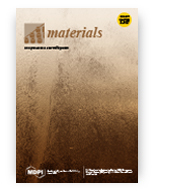 The technology based on electrospun membranes exhibits great potential in water treatment. This study presents experimental data involving the fabrication of nanofiber membranes with powdered activated carbon (PAC) and its application for the removal of natural organic matter. The fabricated membrane materials were characterized using various techniques. These include scanning electron microscopy (SEM), Fourier transform infrared spectroscopy (FTIR), and X-ray diffraction analysis. The incorporation of PAC nanoparticles influences the structure and physicochemical properties as well as the transport and separation characteristics of the produced membranes. The applicability of the fabricated carbon-based membrane was tested in the filtration experiments. The fabricated membrane is characterized by a high NOM removal efficiency of 79% in the filtration process. Further modification of the membrane composition may result in a further increase in the efficiency of removing contaminants from water.
The technology based on electrospun membranes exhibits great potential in water treatment. This study presents experimental data involving the fabrication of nanofiber membranes with powdered activated carbon (PAC) and its application for the removal of natural organic matter. The fabricated membrane materials were characterized using various techniques. These include scanning electron microscopy (SEM), Fourier transform infrared spectroscopy (FTIR), and X-ray diffraction analysis. The incorporation of PAC nanoparticles influences the structure and physicochemical properties as well as the transport and separation characteristics of the produced membranes. The applicability of the fabricated carbon-based membrane was tested in the filtration experiments. The fabricated membrane is characterized by a high NOM removal efficiency of 79% in the filtration process. Further modification of the membrane composition may result in a further increase in the efficiency of removing contaminants from water.
DOI:10.3390/ma14164426
Simple and Rapid Method for Wogonin Preparation and Its Biotransformation
Tomasz Tronina, Monika Mrozowska, Agnieszka Bartmańska, Jarosław Popłoński, Sandra Sordon, Ewa Huszcza
International Journal of Molecular Sciences
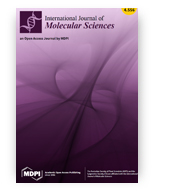 Wogonin is one of the most active flavonoids from Scutellaria baicalensis Georgi (baikal skullcap), widely used in traditional Chinese medicine. It exhibits a broad spectrum of health-promoting and therapeutic activities. Together with baicalein, it is considered to be the one of main active ingredients of Chinese medicines for the management of COVID-19. However, therapeutic use of wogonin may be limited due to low market availability connected with its low content in baikal skullcap and lack of efficient preparative methods for obtaining this compound. Although the amount of wogonin in skullcap root often does not exceed 0.5%, this material is rich in wogonin glucuronide, which may be used as a substrate for wogonin production. In the present study, a rapid, simple, cheap and effective method of wogonin and baicalein preparation, which provides gram quantities of both flavonoids, is proposed. The obtained wogonin was used as a substrate for biotransformation. Thirty-six microorganisms were tested in screening studies. The most efficient were used in enlarged scale transformations to determine metabolism of this xenobiotic. The major phase I metabolism product was 4′-hydroxywogonin—a rare flavonoid which exhibits anticancer activity—whereas phase II metabolism products were glucosides of wogonin. The present studies complement and extend the knowledge on the effect of substitution of A- and B-ring on the regioselective glycosylation of flavonoids catalyzed by microorganisms.
Wogonin is one of the most active flavonoids from Scutellaria baicalensis Georgi (baikal skullcap), widely used in traditional Chinese medicine. It exhibits a broad spectrum of health-promoting and therapeutic activities. Together with baicalein, it is considered to be the one of main active ingredients of Chinese medicines for the management of COVID-19. However, therapeutic use of wogonin may be limited due to low market availability connected with its low content in baikal skullcap and lack of efficient preparative methods for obtaining this compound. Although the amount of wogonin in skullcap root often does not exceed 0.5%, this material is rich in wogonin glucuronide, which may be used as a substrate for wogonin production. In the present study, a rapid, simple, cheap and effective method of wogonin and baicalein preparation, which provides gram quantities of both flavonoids, is proposed. The obtained wogonin was used as a substrate for biotransformation. Thirty-six microorganisms were tested in screening studies. The most efficient were used in enlarged scale transformations to determine metabolism of this xenobiotic. The major phase I metabolism product was 4′-hydroxywogonin—a rare flavonoid which exhibits anticancer activity—whereas phase II metabolism products were glucosides of wogonin. The present studies complement and extend the knowledge on the effect of substitution of A- and B-ring on the regioselective glycosylation of flavonoids catalyzed by microorganisms.
DOI:10.3390/ijms22168973









